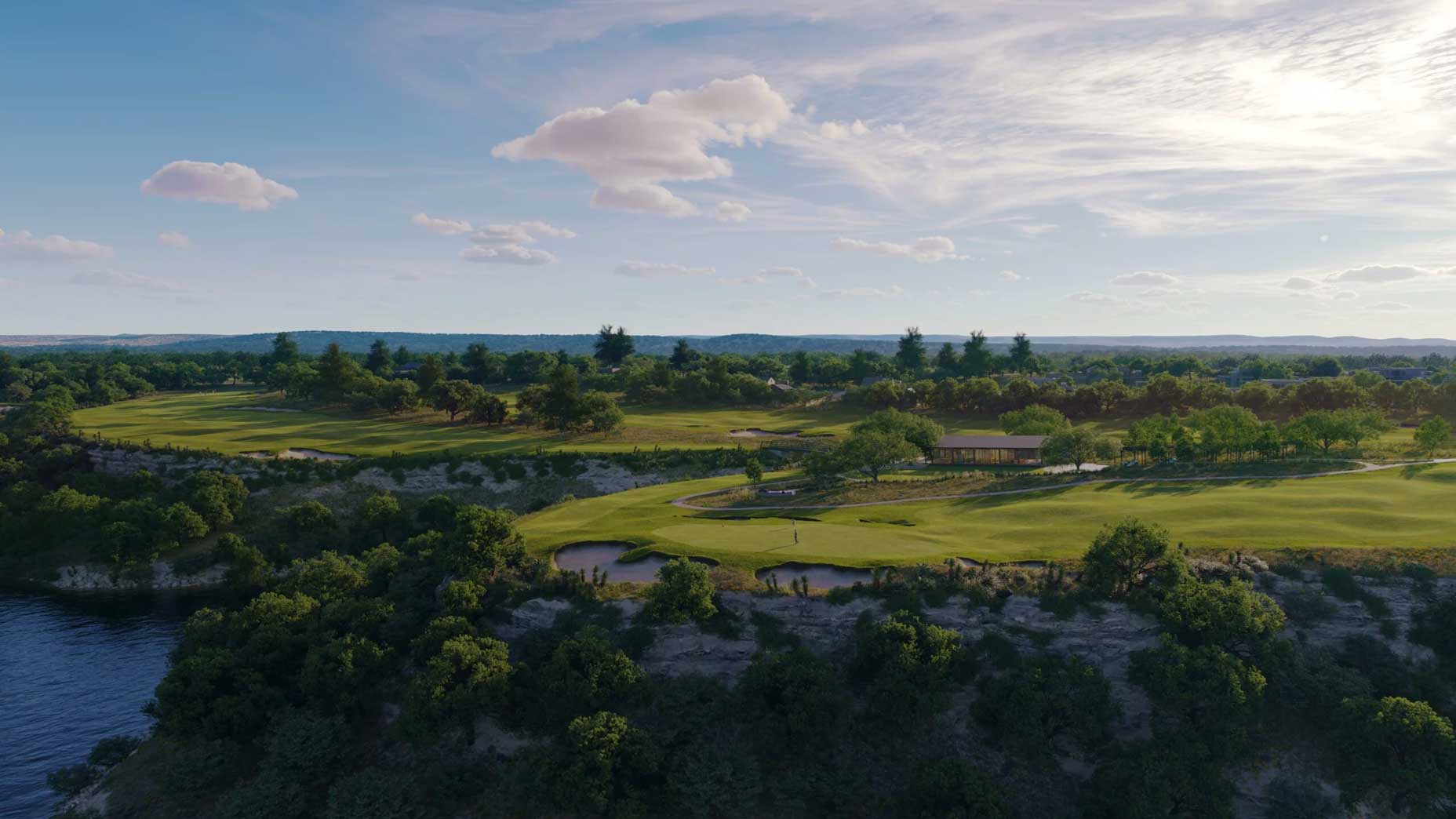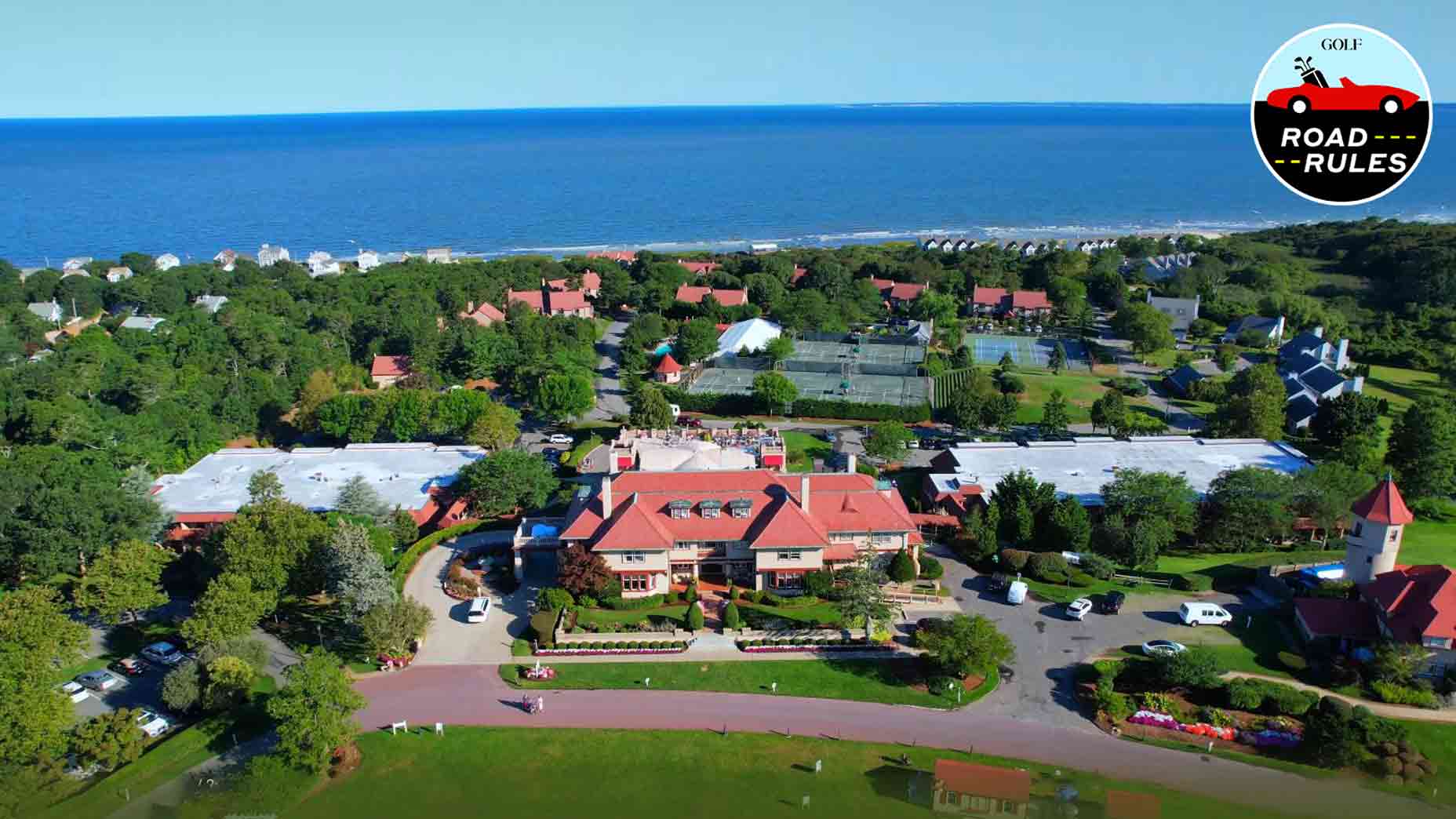Let’s take a golf trip up the California coast, with an eye toward playing the pretty seaside courses. Notice, as we travel, the traits these places share.
Of those that aren’t private, most are either luxe resorts or jam-packed munis. To land a tee time, we’ll need to have some luck with the reservation system, or set aside a good chunk of our paycheck. If you’ve got Clint Eastwood in your contacts, you might ask if he can host at Cypress Point.
With rare exceptions, this is what we’re up against from San Diego to San Francisco. Crowds, costs, exclusivity, or some combination of the three.
Better to keep rolling beyond the Golden Gate.
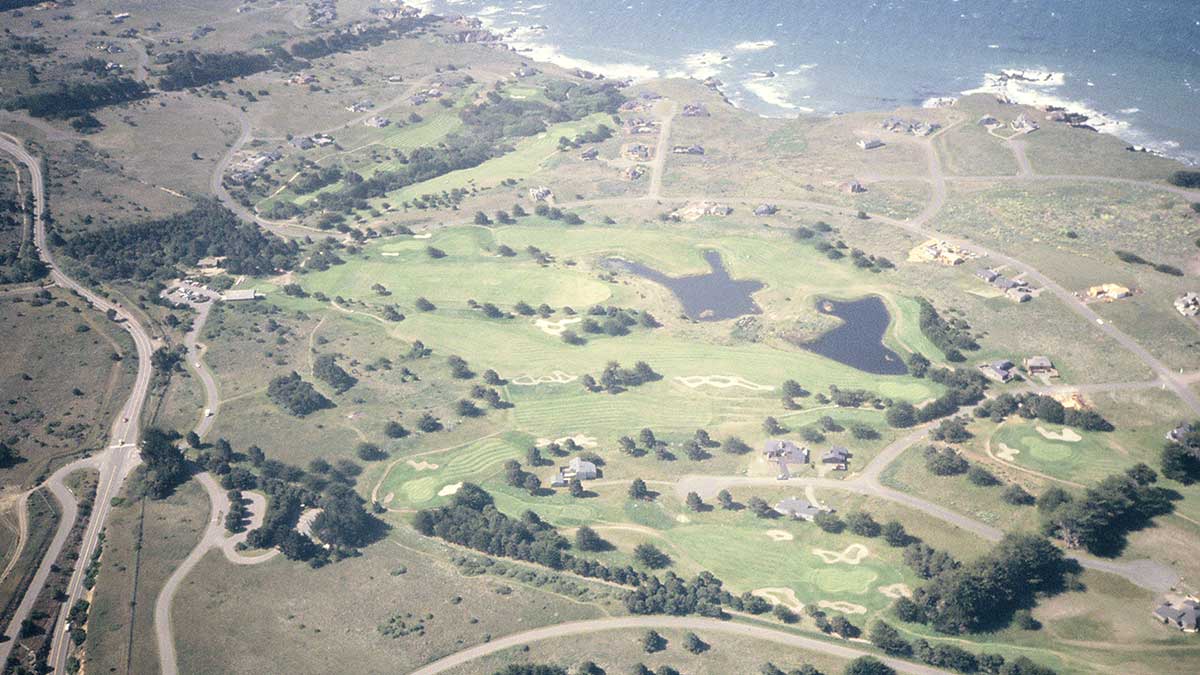
The coastal route here is Highway 1, scenic and slow-going. For reasons related to both safety and aesthetics, it is not a drive we’re going to want to rush. It will take us more than three hours to go 100 miles, on a snaking path, skirting nosebleed bluffs, before we get to our sleepy destination, a far-flung course you’ve probably never heard of. A lot of avid golfers haven’t, anyway.
Situated at the craggy edge of Sonoma County, the course has 18 holes and million-dollar views. Greens fees, though, max out at $80 and drop to less than half of that at twilight. There’s an understated clubhouse and a scruffy range, neither of which is close to being congested. There’s no back up on the first tee, either. We could show up on a weekend without booking in advance and have no trouble getting on.
How has a spot like this escaped your notice? Only with some context does it make a shred of sense.
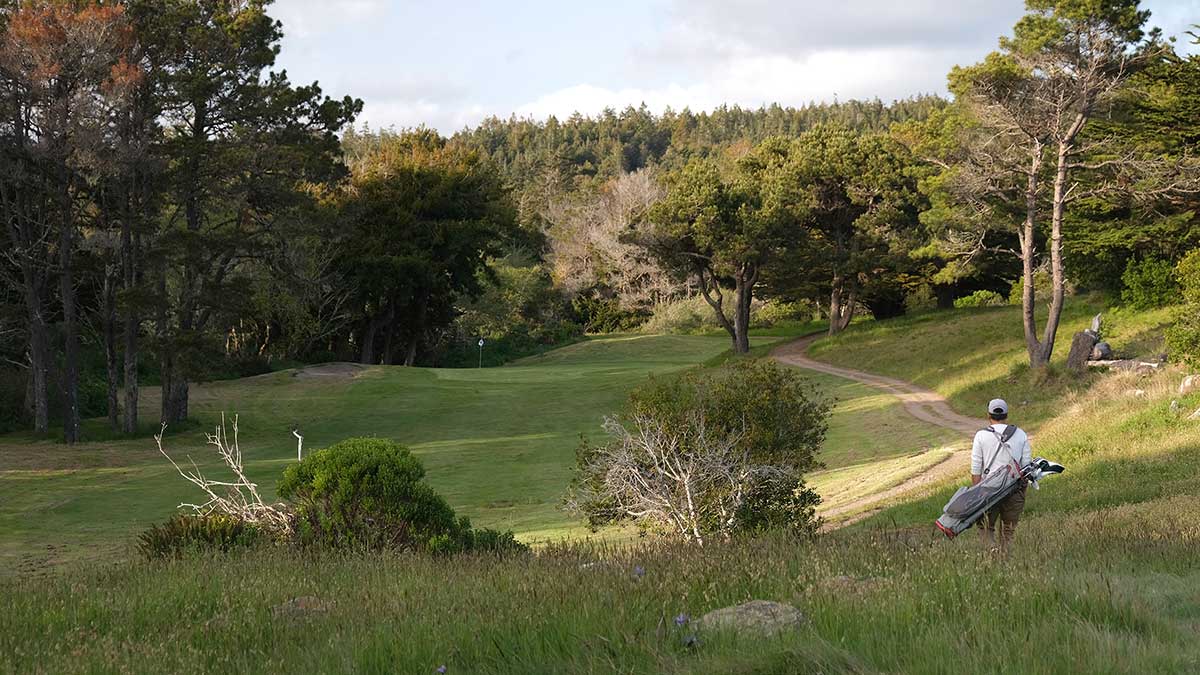
Sea Ranch Golf Links shares its name with a residential community of the same name, a pioneering project born in the 1960s as an outgrowth of the environmental movement. In a post-war era that saw vast swaths of the country swallowed up by sprawl, Sea Ranch countered real-estate conventions. It was infused with the eco-minded notion that people could and should live lightly on the land. Instead of subdivisions, its blueprint called for loose clusters of unpainted, wood-framed homes, many of them designed by noted modern architects, all of them meant to blend into their surrounds. Imagine if Tom Doak dreamed up a bunch of dwellings.
Low-impact amenities were included, too: tennis courts, swimming pools, canoeing. And a golf course that presaged today’s minimalist trends.
The intent was summed up nicely by Lawrence Halprin, the acclaimed landscape architect who drew up the master plan for Sea Ranch. In “Diary of an Idea,” his 1995 book detailing the philosophy behind the project, Halprin wrote that every nook and cranny had been conceived “in direct response to the character and quality of the coastline.” Golf was no exception. The course was envisioned as a conduit that would connect people to an unspoiled landscape, allowing them to go “hiking in nature” — with a quiver of clubs in hand.
For the course itself, Sea Ranch tapped the architect Robert Muir Graves, who designed all 18 but built them in phases — remote golf before remote golf was the rage. The front nine opened in 1974. The back nine was completed in 1995.
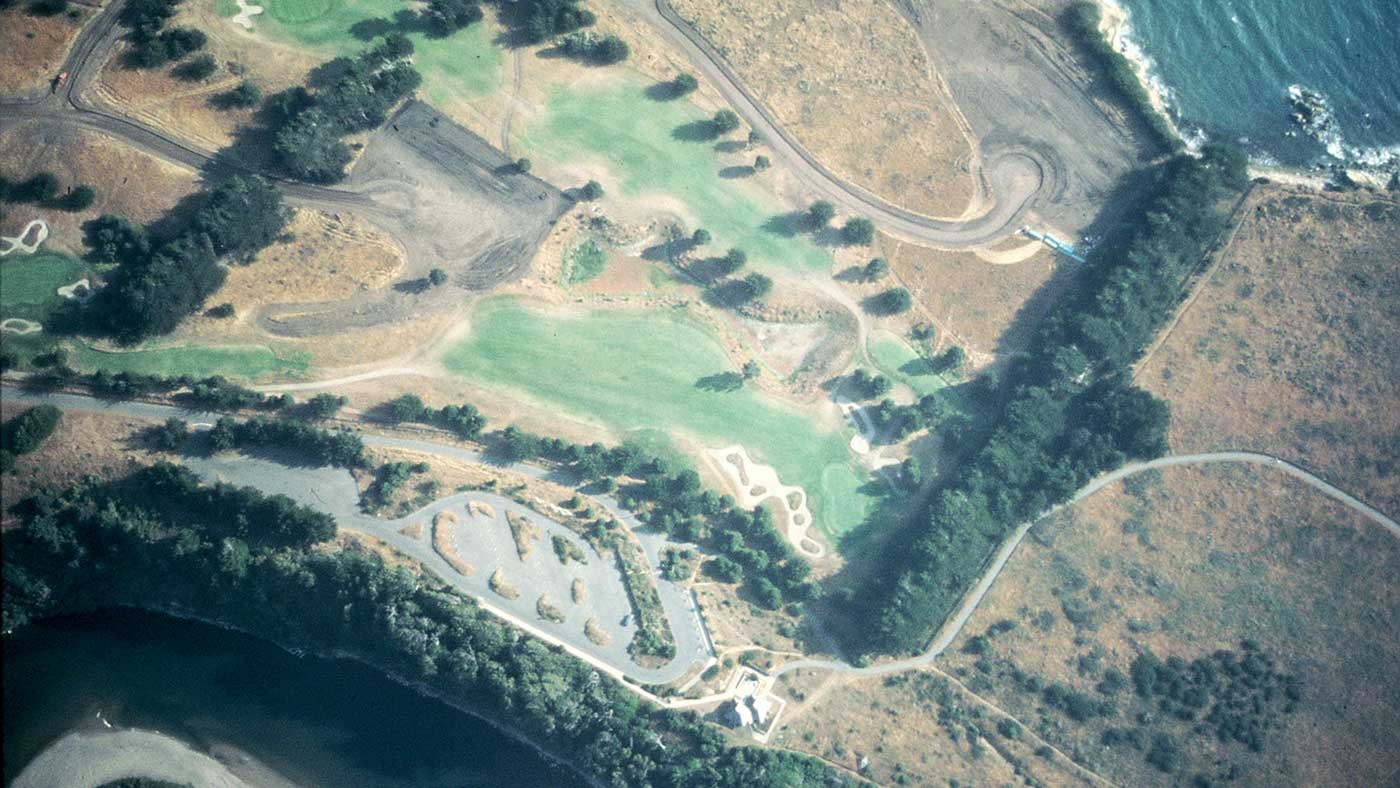
In the decades since, Sea Ranch has earned its share of golf-centric headlines and a place on a bundle of “best” courses lists. But it has never been a magnet for the masses. A long drive from the closest major market, it is not a place for a one-day getaway. And with just one course on-site — and no others nearby — it doesn’t fit the profile for a classic buddies’ trip.
But here we are. We’ve made it. Let’s take a look around.
Though they call Sea Ranch a links, it isn’t really. Not by dictionary definition. The land isn’t sandy. The turf isn’t fescue. On the front side, Muir Graves and his team planted hundreds of trees, and several holes now play through corridors of pines. We say that not to quibble but to clarify. And, anyway, if it’s old-school character people are after, there’s plenty of that to go around.
To borrow a term beaten dead on Instagram, what stands out at Sea Ranch is the vibe, which is laid-back, unassuming: the come-as-you-are air of a small-town course we might stumble on in Scotland. Conditions are rustic. The greens are more shag carpet than linoleum floor. Trees shield against the wind, but you still feel the ocean breezes and the kiss of coastal mist. All 18 holes give glimpses of the water. Several, like the 8th, a par-3 that plays over a gulley to a bluff-top green, provide a Pacific panoramic. Beautiful eyefuls, everywhere.

The community of Sea Ranch stretches for 10 miles along the coast. There’s a chic lodge to the south, with newly renovated guest rooms and a newly launched portfolio of iconic modernist homes, available for rent. The course sits to the north. Its clubhouse, like the lodge, was recently upgraded. The owners have deep pockets, and have taken modest steps toward fine-tuning the course, mostly in the way of more attentive grooming. What else they might do is another matter. Protections are tight and with good reason; it’s hard to trim a branch at Sea Ranch without submitting to review. Exactly what needs doing is a separate topic, too. A stickler might suggest that the fairways could be firmer, and that the entire property could use more bounce and roll. Selective tree removal seems like a smart suggestion. There’s no doubt that the bunkers have seen better days.
Talk to locals, though, the folks who play the course most often, and you sense they’re of two minds about the prospects of improvements that might call greater attention to their little secret. You can understand that thinking. On the one hand, it strikes you that the place is too compelling to remain undiscovered. On the other, part of you can’t help but hope it stays that way.



